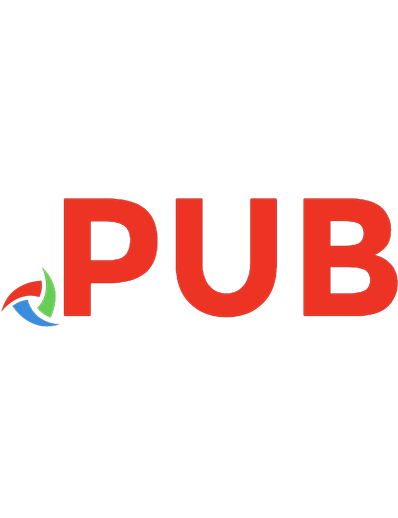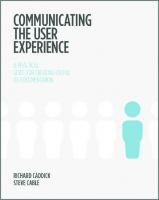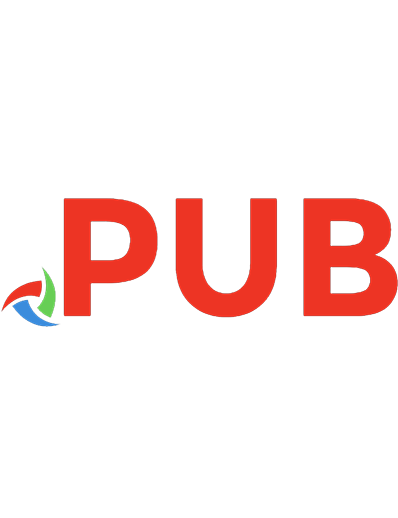UX Lifecycle: The Business Guide To Implementing Great Software User Experiences 9781501521522
This book is for business leaders looking to build software that creates better business outcomes by delivering effectiv
130 103 4MB
English Pages 146 Year 2023

- Author / Uploaded
- Clive Howard and Jermy Baines
- Categories
- Computers
- Organization and Data Processing
Table of contents :
Cover
Halftitle
Title
Copyright
Contents
Preface
Chapter 1: The Aim of this Book
Who is This Book For and What You Will Learn
Delivering UX to New Places
Addressing Scale and Complexity Requires a Methodology
Deep Dive: How Does UX Differ Across B2C, B2B, and B2E?
References
Chapter 2: What is UX?
Much More Than a Pretty Interface
How Does UX Relate to the Wider Business Context?
Design, Research, Science, and Development: A Multi-Discipline Practice
As Much Science as It Is Art
Design Philosophies
Design Thinking
User-Centered Design (UCD)
Software Design
Five Steps to Creating a Great Experience
Step 1: The Objective
Step 2: The Process
Step 3: The Stakeholders
Step 4: The Delivery
Step 5: The Result
Think Outside of the Application
Applying Key UX Principles Without Visual Design
The Best Experience Starts With the Best Process
Other Experience Disciplines
Three Phases of Application Engagement: First, Regular, and Experienced
HCI Theories
Key Takeaways
References
Chapter 3: Making the Business Case
The Business Benefits of Great UX
Common Experience Metrics
Key UX Value Drivers: Efficiency, Effectiveness, and Satisfaction
Business-to-Consumer Benefits Are Often Obvious
The Case for Business-to-Business: Challenging, But Compelling
The Impact of Bad UX
Benefits of Good UX
Shadow IT
Good UX Creates a More Efficient Software Development Process
Unexpected Benefits May Follow
Key Takeaways
References
Chapter 4: Getting Started
Building a Solid Foundation for a UX Transformation
Selling UX to the Business Through Education and Evangelism
Enthusiasm with Realistic Expectations
Change is Good, But Challenging
Where Do I Start?
Collaboration Starts with Stakeholders
Business Stakeholders
Development and UX Stakeholders
UX Tools
Beginning the UX Journey
Choosing the Right Project
Minimum Viable Product
UX Tools and Technology for a More Efficient Implementation
Frameworks Can Reduce Friction and Save Time
Technology Frameworks
Analytics for Research and Proving Business Value
How Do I Know If I Have a UX Problem?
Key Takeaways
References
Chapter 5: Roles and Skills
UX Encompasses Many Roles
UX Practitioners: Understanding Beyond Their Domain
UX Director/UX Strategist/Head of UX
UX Researcher
UX Architect/UX Designer
UI Designer
UX/Front-End Developer
UX Professionals’ Salaries and Contract Rates
Key Takeaways
References
Chapter 6: UX Lifecycle: Introduction
An Iterative Process for Continuous Improvement
Stages are More Important Than Specific Activities
How Does the Physical World Relate to the Software Experience?
Discover - Research and Design
How Does a New Iteration of the UX Lifecycle Begin?
Build - Optimize and Develop
IT has an Important Contribution to Make
Measure - Deploy and Validate
Key Takeaways
References
Chapter 7: UX Lifecycle Stage One: Discover
Research: The Foundation of Great UX Design
Without Research, There Is No UX
Usability Conventions
The UX Mantra: Users, Users, Users
Understanding Different Types of Users
Embrace Standards and What Others Have Already Discovered
ISO Standards in Usability
Quantitative and Qualitative Data: Why You Need Both
Quantitative
Qualitative
Human Data: Behavioral and Attitudinal
UX Research Methods and Why You need more than One
Information Architecture
Designing the Workflow, Interface, and Experience
Interaction Design
Key Takeaways
Chapter 8: UX Lifecycle Stage Two: Build
Optimize the Experience, Then Build It
Technology Limitations
The UX Team Should Appreciate Technology and Developers
Developers’ Skills Are Critical for Creating the Experience
Developers Need to Be Friends, Not Enemies, of UX
Developers: Great Proponents
UI Code Optimization
Harmony Between UX and Development Processes Aids Success
Mobile UX
Key Takeaways
References
Chapter 9: UX Lifecycle Stage Three: Measure
Deploy, Validate, and Repeat
Check That What Was Intended Was Delivered
Include UX Testing in the Overall Testing Plan
UX Testing Methods
How DevOps Helps to Deliver and Validate UX
Be Cautious of DevOps Pitches That Include UX
Why Are UX Lifecycle Stages More Important Than Specific Activities?
Users are Critical, and Success is the Final Deliverable
Key Takeaways
References
Chapter 10: Maturity Model
Maturity Leads to More Efficiency and Less Friction
Best Practices and UX Debt
Signs of a Maturing UX Capability
Why UX Fails
Industrialized UX for Operating at Scale
Scale Means Greater Collaboration and Formalization
The Future Holds Diverse Experiences
What Should I Expect at the Start the UX Journey?
Creating a More Efficient Implementation With a UX Platform
Enable UX Lifecycle Stages to Flow Smoothly
Beyond Methodology: A UX Philosophy
Key Takeaways
References
Chapter 11: Case Study 1: Big Power Company
Identifying the UX Problem
Making the Business Case
Getting Started
Development
Scaling the UX Capability
Chapter 12: Case Study 2: Midsize Software Company
Identifying the UX Problem
Making the Business Case
Getting Started
Development
Scaling the UX Capability
Index

![Designing User Experience: A guide to HCI, UX and interaction design [4 ed.]
1292155515, 9781292155517](https://dokumen.pub/img/200x200/designing-user-experience-a-guide-to-hci-ux-and-interaction-design-4nbsped-1292155515-9781292155517.jpg)
![The Art and Science of UX Design: A step-by-step guide to designing amazing user experiences [1 ed.]
0138060266, 9780138060268](https://dokumen.pub/img/200x200/the-art-and-science-of-ux-design-a-step-by-step-guide-to-designing-amazing-user-experiences-1nbsped-0138060266-9780138060268-u-8510063.jpg)
![The Art and Science of UX Design: A step-by-step guide to designing amazing user experiences [1 ed.]
0138060266, 9780138060268](https://dokumen.pub/img/200x200/the-art-and-science-of-ux-design-a-step-by-step-guide-to-designing-amazing-user-experiences-1nbsped-0138060266-9780138060268.jpg)



![The UX Book: Agile UX Design for a Quality User Experience [2 ed.]
0128053429, 9780128053423](https://dokumen.pub/img/200x200/the-ux-book-agile-ux-design-for-a-quality-user-experience-2nbsped-0128053429-9780128053423.jpg)
![A Project Guide to UX: For User Experience Designers in the Field or in the Making [3 ed.]
9780138188283](https://dokumen.pub/img/200x200/a-project-guide-to-ux-for-user-experience-designers-in-the-field-or-in-the-making-3nbsped-9780138188283.jpg)
